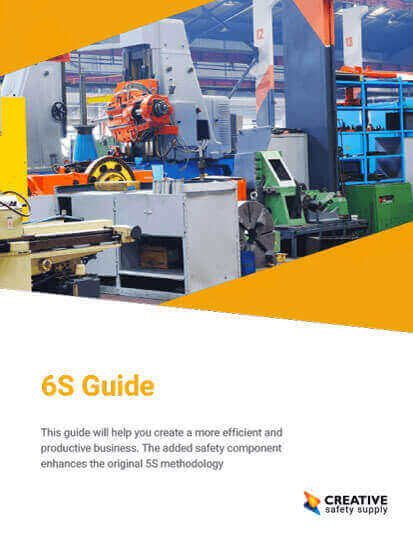
While 6S methodology has found significant success in manufacturing settings, its applicability in non-manufacturing environments is a topic of interest. The principles of 6S, with an added emphasis on safety, can bring transformative benefits to a wide range of workplaces beyond the factory floor. In this article, we'll explore the adaptability of 6S in non-manufacturing settings and how it can revolutionize organizational efficiency and safety.
Applying 6S Beyond Manufacturing
6S methodology is fundamentally a structured approach to workplace organization and process improvement. Its components—Sort, Set in Order, Shine, Standardize, Sustain, and Safety—provide a universal framework for optimizing workspaces. Let's examine how these principles translate to non-manufacturing environments:
- Sort (Seiri): In non-manufacturing settings like offices, healthcare facilities, and service industries, the principle of sorting involves decluttering workspaces, removing unnecessary items, and organizing files, documents, or tools for optimal accessibility.
- Set in Order (Seiton): The second step focuses on arranging essential items and resources in a logical manner. This can involve creating efficient filing systems, establishing designated workstations, and ensuring tools are easily accessible.
- Shine (Seiso): Regular cleaning and maintenance are crucial in any environment. This step involves maintaining a clean and safe workspace, which is equally applicable in non-manufacturing settings.
- Standardize (Seiketsu): Standardization in non-manufacturing environments may involve establishing clear protocols for tasks, workflows, and communication. This ensures consistency and efficiency in daily operations.
- Sustain (Shitsuke): Sustaining the improvements requires ongoing commitment and discipline from employees. This can be achieved through regular training, audits, and reinforcement of 6S principles.
- Safety: Safety is paramount in all environments. In non-manufacturing settings, this may involve identifying and mitigating potential hazards, providing proper ergonomic setups, and ensuring compliance with safety regulations.
Examples of 6S in Non-Manufacturing Environments
- Office Environments: In offices, 6S principles can be applied to optimize workstations, organize documents, and establish clear protocols for tasks and communication. Regular cleaning routines and ergonomic assessments contribute to a safer and more efficient workspace.
- Healthcare Facilities: In healthcare, 6S can improve the efficiency of patient care by ensuring that essential supplies and equipment are readily available. It also plays a crucial role in maintaining a clean and safe environment, contributing to patient and staff well-being.
- Retail Settings: Retail environments can benefit from 6S by optimizing product displays, organizing inventory, and ensuring that safety protocols are followed. This leads to a more appealing shopping experience for customers and a safer workspace for employees.
Adapting 6S for Organizational Excellence
The adaptability of 6S beyond manufacturing environments highlights its universal applicability. By applying the principles of Sort, Set in Order, Shine, Standardize, Sustain, and Safety, businesses in various industries can achieve heightened levels of efficiency, safety, and organizational excellence.
Similar Questions
- What Are the Key Steps in Implementing 6S for Lean Manufacturing?
- Why should you implement 6S in your workplace?
- How Can 6S Improve Workplace Safety and Reduce Incidents?
- What is 6S methodology and how can it revolutionize workplace efficiency?
- How does employee engagement affect 6S implementation?
- What are Some Examples of 6S?
- What is the Definition of 6S?
- What are the Rules of 6S Safety?
- Why is 6S important?

